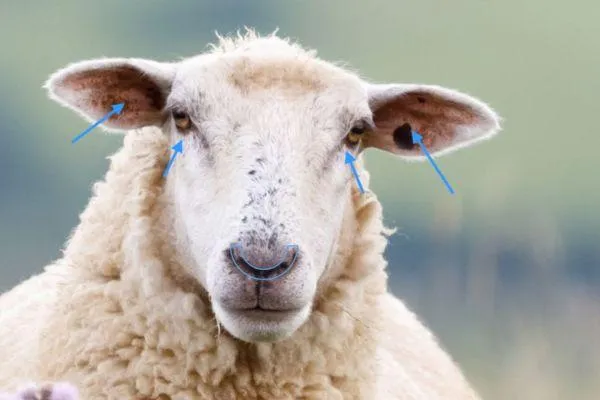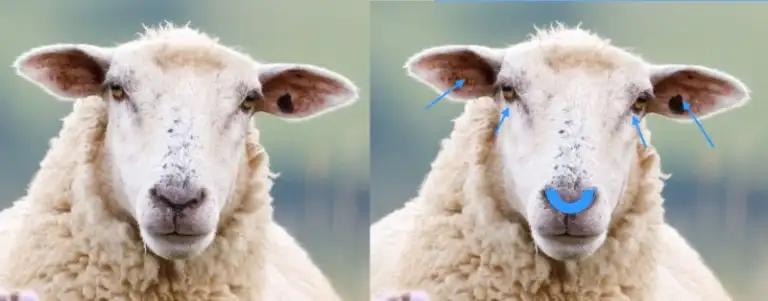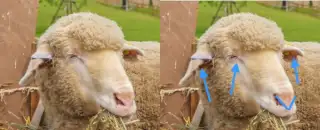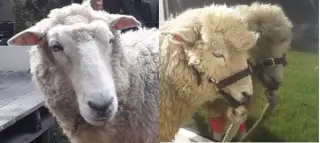
Reading Pain in Sheep: The Facial Grimace
The facial grimace is a simple and reliable way to recognise pain in sheep. When a sheep is in pain, the muscles in its face tighten in response to discomfort. This changes the way the face looks and creates what we call the facial grimace.
By learning what to look for, you can assess whether your sheep is in pain and how much pain they are in.The facial grimace is useful as a way to tell if a sheep is in pain, and how much pain.
What to look for
the ears
the eyes
the nose
A Healthy, Pain-Free Sheep
When you approach a healthy sheep, you’ll typically see:
Ears pointing forward so you can see the inside of each ear
Eyes open and alert, clearly watching you
Nose shaped like a soft, round "U"
This is the baseline to compare against.

A Sheep in Pain
A sheep that is in pain will look noticeably different:
Ears drooping down so the inner ear is no longer visible
Eyes half closed and not alert
Nose pulled into a sharper "V" shape
The more obvious these changes are, the more pain the sheep is likely to be in.

Moderate and Severe Pain
In the images below, the sheep on the left is showing signs of moderate pain. The sheep on the right is in more severe pain.
Being able to recognise this facial change helps you intervene early and ensure the animal is treated or monitored appropriately.

Why It Matters
Sheep are naturally good at hiding signs of pain, which makes early recognition difficult. The facial grimace offers a practical way to identify pain that might otherwise go unnoticed. Whether the cause is illness, injury or a recent procedure, recognising pain early makes a big difference to animal welfare.
Want to know more?
Understand how sheep see the world
For a deep-dive, enroll on our What You Need to Know to Keep Sheep online course.

